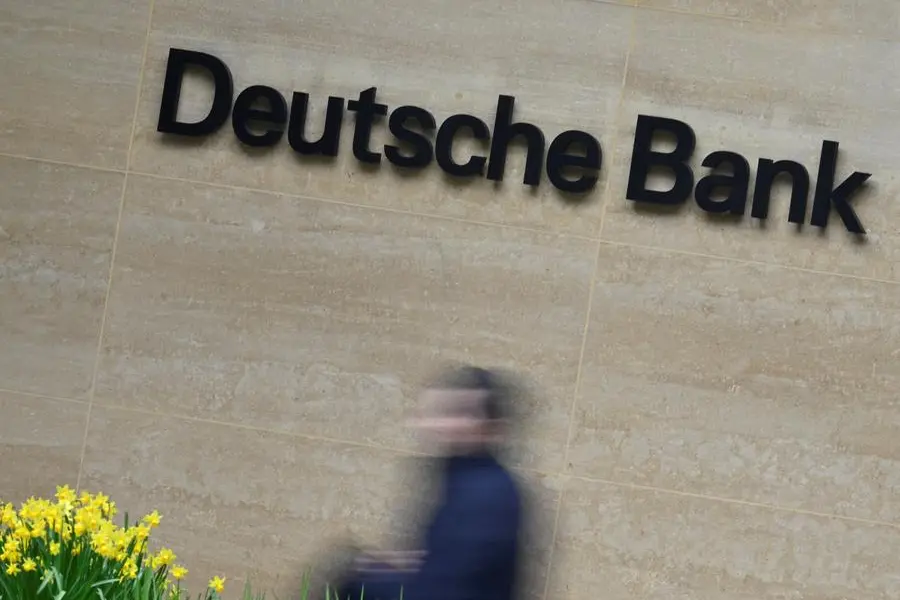PHOTO
Image used for illustrative purpose.
While green bonds have found early favour with green projects financing, it is inadequate to meet the entire climate funding need, according to Nneka Chike-Obi, Director, Sustainable Finance, Fitch Ratings.
Chike-Obi, who has co-authored a report ‘Financing Climate Transition in Infrastructure’, released earlier this year, cited an estimate from the Global Commission on the Economy and Climate that places energy efficiency and low-carbon infrastructure at $13.5 trillion by 2030.
“The total green bond market is around $1 trillion in cumulative issuance which will not be sufficient to meet the climate funding gap,” she said and added that the sustainability-linked debt market, in both loans and bonds, can perhaps fill some of this gap.


Nneka Chike-Obi, Director, Sustainable Finance, Fitch Ratings
“These products allow borrowers or issuers to improve their cost of capital through achievement of sustainability performance targets, as can other product innovations like ESG-linked working capital and trade finance facilities and ESG-linked derivatives.”
Demand for green projects
Prompted by the regulatory changes, government incentives and the changing consumer preferences, some banks are already excluding fossil-fuel sectors from financing and are directing the capital towards renewable energy projects. Fitch Ratings said this puts the conventional assets contributing to climate change at risk in terms of their operation, revenue, infrastructure and renewal.
With greenhouse financing of gas emitting assets losing favour and the global powers moving to achieve Net Zero emission by 2050, the world is staring at an increased adaptation and mitigation cost towards its achievement.
Fitch’s own report quotes the World Bank estimate that places the annual global adaptation cost alone of $70 billion to $100 billion for a 2°C temperature rise by 2050. The $13.5 trillion that the Global Commission on the Economy and Climate talks about is above the base case requirement of $89 trillion, the report said.
The Fitch report makes the case that the conditions are present for significant growth in project finance and infrastructure green bond issuance.
“This is because infrastructure investment is critical in the transition to a low-carbon economy,” said Chike-Obi, explaining the report that marks infrastructure as a ‘priority asset class for environmental, social and governance (ESG) debt products.’
Projects attracting green finance
On ESG linked finance, she says, “For investors with thematic green portfolios or strong ESG-focused investment mandates, green project bonds offer as close to a ‘pure play’; fixed income instrument as the market can provide.”
Banks are having a growing pool of earmarked loan capital for sustainable projects. Within a portfolio of green projects, institutional investors have it big on opportunities in investment-grade green bonds.
The search trail for sectors amenable to green finance inevitably leads to energy, buildings, transport, water, waste, nature and land use and biodiversity, industry, according to Chike-Obi. “Energy, buildings, and transport make up more than 80 percent of the total issued to date.”
Standalone SPV projects, that do not pose any ESG risk to the investors external to the risk pertaining to the specific project, are a natural draw for the green investors.
On the other hand, investing in green bonds from an oil and gas company, even if the proceeds from the bond is entirely aimed at renewable energy activities, is viewed with disquiet.
“Green project bonds win over green corporate bonds,” she said.
Who is funding and how
Climate Bonds Initiative (CBI) data shows that, of the total issues of these bonds, 45 percent are public sector -- sovereigns, government agencies, development banks, or local bodies; 20 percent financial institutions and 20 percent non-financial corporates.
“Infrastructure and project finance would fall under either public sector or non-financial corporates depending on the issuer type,” she said, adding that the most compatible for green funding is asset-focused activities.
“Renewable energy-generation and clean transportation is naturally appealing to green funding; for the service industry it is not. Actions such as reducing the carbon footprint or environmental impact of a service-oriented business are not well aligned with a green bond framework.”
Key drivers and opportunities
Asset owners, particularly in Europe and North America, have been pushing for increased scrutiny and higher standards with regards to sustainability. Chike-Obi said this has increased demand for green and other ESG bonds by asset managers, “because they are a relatively straightforward way to increase the amount of assets under management that are aligned with sustainability outcomes”.
“Asia is the third-largest region issuing green bonds after Europe and North America, but it is quite close to North America,” said Chike-Obi and pegs the numbers at “$252 billion from North America against $237 billion from APAC at the end of 2020.”
While Asia and the Middle East have fossil fuel assets with a larger remaining lifespan compared to developed markets, she said there had already been a slowdown in development of new coal-fired power plants, for example.
“Middle East and Asia also have opportunities in positioning sovereign debt for financing of sustainable development outcomes in line with the Sustainable Development Goals, a key priority for supranational lenders and governments.”
Population growth and urbanisation could also support green investments in buildings, water and wastewater, and transportation.
In China, for instance, much of the green bond activity is financing transport and real estate development, she said. “Some of this is expanding into the Middle East and Africa via the Belt and Road Initiative (BRI) investments, with initiatives such as Green Belt and Road encouraging Chinese policy banks to invest into environmentally sustainable projects.”
“We anticipate further growth in green project bonds, driven by investor demand and an acceleration towards achieving net-zero targets by 2050,” Chike-Obi had written in her introduction to the report.
Green bond risks
There could be ESG elements in green bond investment that investors would want to keep abreast of, but financial performance still stands as the most watched out for.
As the bond is repaid from the operational revenues of the project, the risk to the investors comes from the financial structure of the projects and the soundness of its revenue stream. These are the factors that investors want to scrutinise while evaluating for elimination of risks, states Fitch Ratings.
“We do consider ESG factors where they are relevant and have a material impact on the issuer’s profitability or access to capital, among other criteria,” said Chike- Obi but added, “From Fitch’s perspective as a credit rating agency, issuer risk is evaluated based on their financial performance.”
Investors, therefore, would want to have some easy-to-follow guides that would help them evaluate green bonds in terms of the level of its structure, best practices including eligible project types, reporting and monitoring.
For ready reference, she said the International Capital Market Association (ICMA) has one of the most widely referenced international standards for green bonds - the ICMA Green Bond Principles (GBP).
At the regional level, she finds the European Union taxonomy and China Green Bond Catalogue being widely used. Besides, the European Union is developing its own Green Bond Standard with stricter monitoring requirements and penalties for defaulters.
Demand-supply mismatch
With all the market projections for transition funds being brandished about, the actual investment-grade sustainable or green assets available for funding is far less than the available funds. With the demand from investors outstripping the supply in the market, fund managers are left chasing the fewer ones available leading to a premium otherwise called ‘greenium’, she said.
“There is clearly a supply and demand issue in the green bond market, based on the ‘greenium’ in pricing that emerges as a result of more demand from investors compared to supply in the market.”
At the same time, for a multitude of reasons, she said much of the emerging technologies being developed to address climate change will come from start-ups but “start-up companies are not suitable for bond financing.”
Chike-Obi suggested one way to ‘increase’ the amount of investment grade green assets for supranational and sovereigns is to convert a larger portion of their bond programmes to green or sustainable bond issuances.
She said opportunities would also open up once the work-in-progress initiatives like the Task Force on Nature-related Financial Disclosures (TNFD) are complete. That should help investors get reports from companies on their impact on nature and would facilitate drawing in investors.
“A working group is preparing a framework to help companies report on their impacts on nature - including land, biodiversity, and other resources. We expect an increase in bond financing addressing those risks once this project has been completed, similar to what happened with the TCFD focused on emissions and climate,” said Chike-Obi.
Green beyond BRI projects
The Fitch official pointed out that “it is unlikely that a BRI project would be in a position of issuing its own green bond, though China is the second largest issuer of green bonds after the US by value.”
She noted that BRI projects, including green BRI, are being largely financed by Chinese banks -- both policy banks (government controlled) and commercial banks. China Development Bank as well as ICBC Bank of China have issued BRI focussed green bonds. But, as with other development-oriented funding, in most cases, the recipient project would not be able to raise its own capital in the absence of support from the lenders”.
Sustainable sukuk
“The Middle East and Africa make up only one percent of total green bond issuance to date. Understandably so, as the economies in the region are tied with oil and gas,” she said.
“A challenge is the large amount of GDP linked to oil and gas in many countries in the region; but there are opportunities for financing, for example, low-carbon buildings and energy efficiency without addressing the oil sector,” she said.
Chike-Obi said Etihad Airways issuing a $600 million sustainability-linked sukuk on the airline’s carbon emissions; Turkish banks and energy companies issuing their own bonds; Egypt coming up as sovereign issuer with Turkey likely to follow represent a forward momentum.
“As in other emerging markets we can expect to see sovereigns, well-capitalised commercial banks, and globally-facing companies in this region like airlines and transportation as the key issuers in the coming years,” Chike-Obi observed.
(Reporting by SA Kader; Editing by Anoop Menon and Bhaskar Raj)
Disclaimer: This article is provided for informational purposes only. The content does not provide tax, legal or investment advice or opinion regarding the suitability, value or profitability of any particular security, portfolio or investment strategy. Read our full disclaimer policy here.
© ZAWYA 2021





















